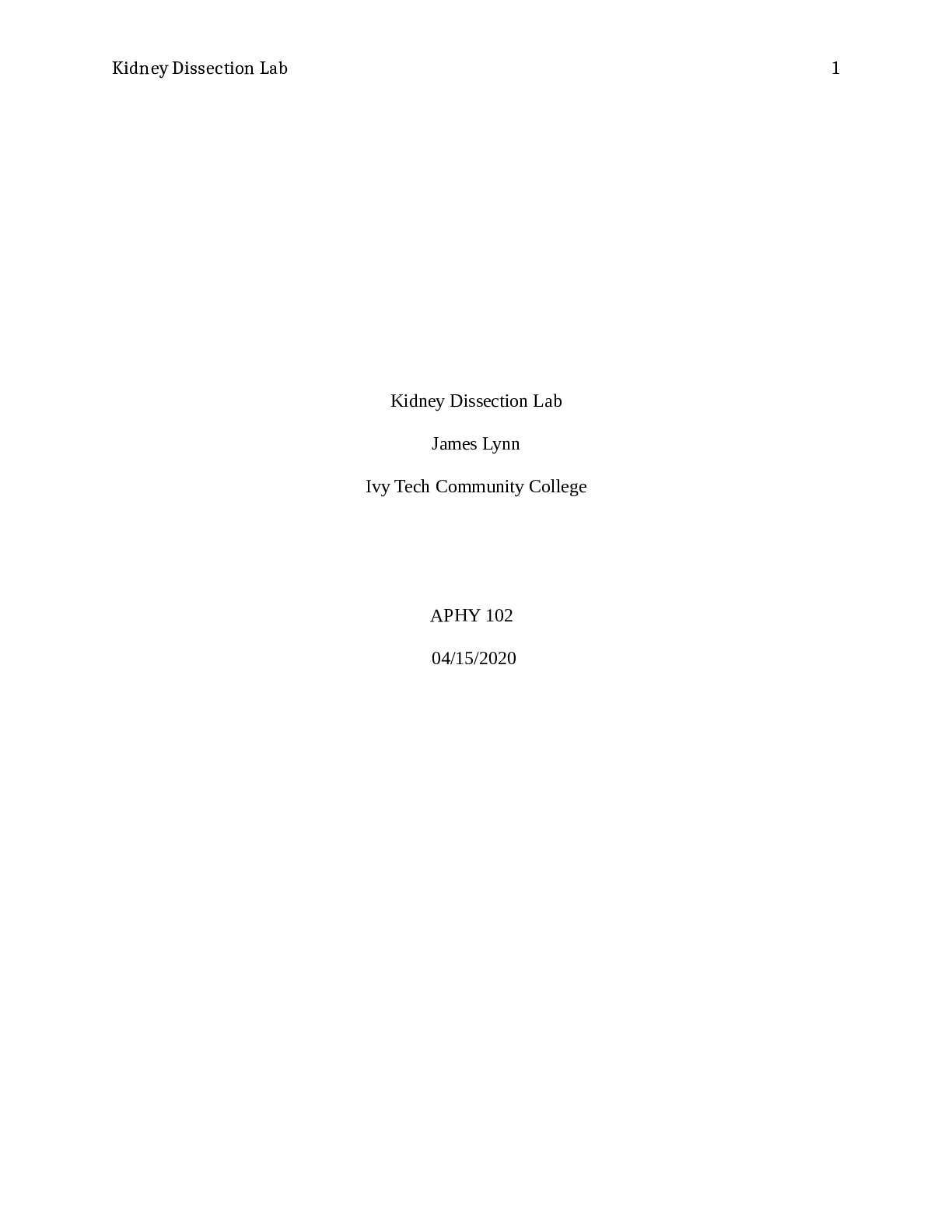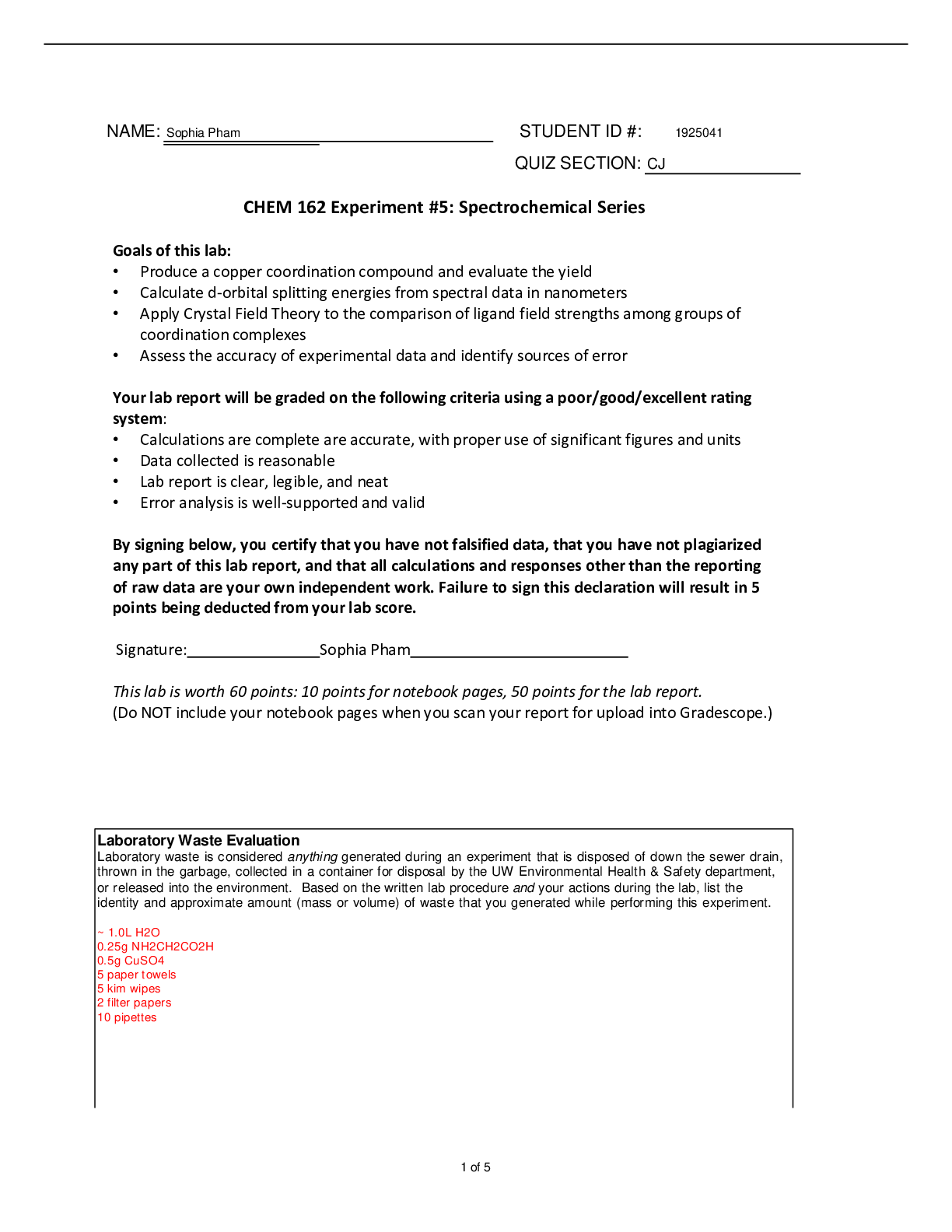Micro Biology > Lab Report > BIOS 242 Week 2-OL, Lab 2: Bacterial Isolation. Graded A. (All)
BIOS 242 Week 2-OL, Lab 2: Bacterial Isolation. Graded A.
Document Content and Description Below
Chamberlain College of Nurs Lab 3: Bacterial Isolation Learning Objectives • Explain the importance of bacterial growth for the investigation of pathological microorganisms • Use aseptic t ... echniques • Explain the concept of a single colony • Perform plate-streaking techniques • Use selective media for isolation purposes Techniques in Lab • Colony screening • Sterile technique • Plate streaking Introduction: Bacterial Isolation Virtual Simulation Lab In the Bacterial Isolation simulation, you will investigate the cause of a contamination of poultry meat by a dangerous bacteria strain that is resistant to common antibiotics. After taking samples from the chicken farm, you will work in the virtual laboratory to isolate single colonies of the deadly bacteria among a variety of different species. To do so, you will learn how to work under sterile conditions, and you will be able to practice and perfect your plate streaking technique. Identifying ampicillin resistant bacteria The premise of the Bacterial Isolation lab is a report of ampicillin resistant bacteria in poultry meat. You will visit the place of origination, a chicken farm, in hopes of identifying the bacteria strain. The first task is to take a sample, which will contain a variety of bacterial strains, and from that, you must identify which strains are resistant to ampicillin by isolating single colonies. Aseptic technique In the Bacterial Isolation lab, you will learn how to use aseptic techniques—for example, remembering to turn on the Bunsen burner and sterile their loop in between streaks. Plate streaking technique In order to identify the specific bacteria strain, you will have to perform bacterial isolation using the plate streaking technique. There is an unlimited supply of agar plates, giving you the opportunity to practice this technique as many times as you like. Results are given immediately, as opposed to waiting a full 24 hours for incubation, as when performed in real life as opposed to in a virtual simulation. You will also streak a special Salmonella Shigella agar. The Salmonella Shigella agar contains a certain medium that only promotes growth of Gram-positive strains. Each of the different strains will exhibit a certain phenotype when grown on the Salmonella Shigella agar. By using this information you can identify the specific strain that is resistant to ampicillin. The sample will then be sent for further analysis to fully confirm the identity. Will you be able to complete the task with your knowledge on bacterial isolation and successfully isolate the dangerous bacterial strain? Record your responses to the questions from simulation (these are in addition to the questions below). Questions: 1. Purpose: Please describe in complete sentences and in your own words, the purpose of this experiment. The purpose of the experiment was to teach us how to figure out what bacteria has infected a patient and separate the different bacteria’s through streak plating. 2. Why is proper aseptic technique important in microbiology? The proper aseptic technique is important in microbiology in order to prevent contamination of the bacteria. 3. What is the importance of flaming the inoculating loop or needle before and after each inoculation? It is important to flame the inoculating loop or needle before and after each inoculation in order to prevent contamination and to reduce the amount of bacterial cells on the tool. 4. If you do not wait 10 – 20 seconds after flame sterilizing the inoculating instruments before obtaining the sample, what might be the consequences? If you do not wait 10-20 minutes after the sterilizing the inoculating instrument you might cook the medium and bacteria running the sample. 5. Why is it important to flame neck of the tubes immediately after uncapping and before recapping the tubes? It is important to flame neck of tubes immediately after uncapping and before recapping them in order to prevent any microbes from contaminating the medium. 6. Reflection: Write 5 sentences on what you learned from this simulation, what did you like and what was something that you would not prefer to be in the simulation. What I learned during this simulation is how to do the streak method. I learned the proper way to prevent contamination and lower the number of bacterial cells on inoculating tubes by flaming them with the Bunsen burner. I also learned how to detect salmonella by incubating the sample of blood from a sick patient. I liked that it showed the medical side of diseases and how to find the type of bacteria affecting the person. I also liked learning the streak method in order to separate salmonella into one colony by itself. There weren’t any parts that I would change because everything in the simulation I believe was important to learn about. Grading Rubric: Activity Deliverable Points Document Submission Complete lab report and answer questions • Observation (3 points) • Purpose (1 point) 15 • Questions (6 points) • Reflection (5 points) Total Complete all lab 15 [Show More]
Last updated: 3 years ago
Preview 1 out of 4 pages

Buy this document to get the full access instantly
Instant Download Access after purchase
Buy NowInstant download
We Accept:

Also available in bundle (1)
Click Below to Access Bundle(s)
 Questions and Answers GRADED A STRAIGHTLINE.png)
BIOS - 242 Week 1 - 8; OL- Lab,Assignments,Quiz, Exams ( Midterm plus End term) Questions and Answers ; Real Exam Summer BUNDLE (GRADED A+).
BIOS - 242 Week 1 - 8; OL- Lab,Assignments,Quiz, Exams ( Midterm plus End term) Questions and Answers ; Real Exam Summer BUNDLE (GRADED A+).
By Prof. Goodluck 4 years ago
$14
23
Reviews( 0 )
$8.50
Can't find what you want? Try our AI powered Search
Document information
Connected school, study & course
About the document
Uploaded On
Oct 07, 2021
Number of pages
4
Written in
All
Additional information
This document has been written for:
Uploaded
Oct 07, 2021
Downloads
0
Views
176


.png)

.png)
.png)
.png)
.png)
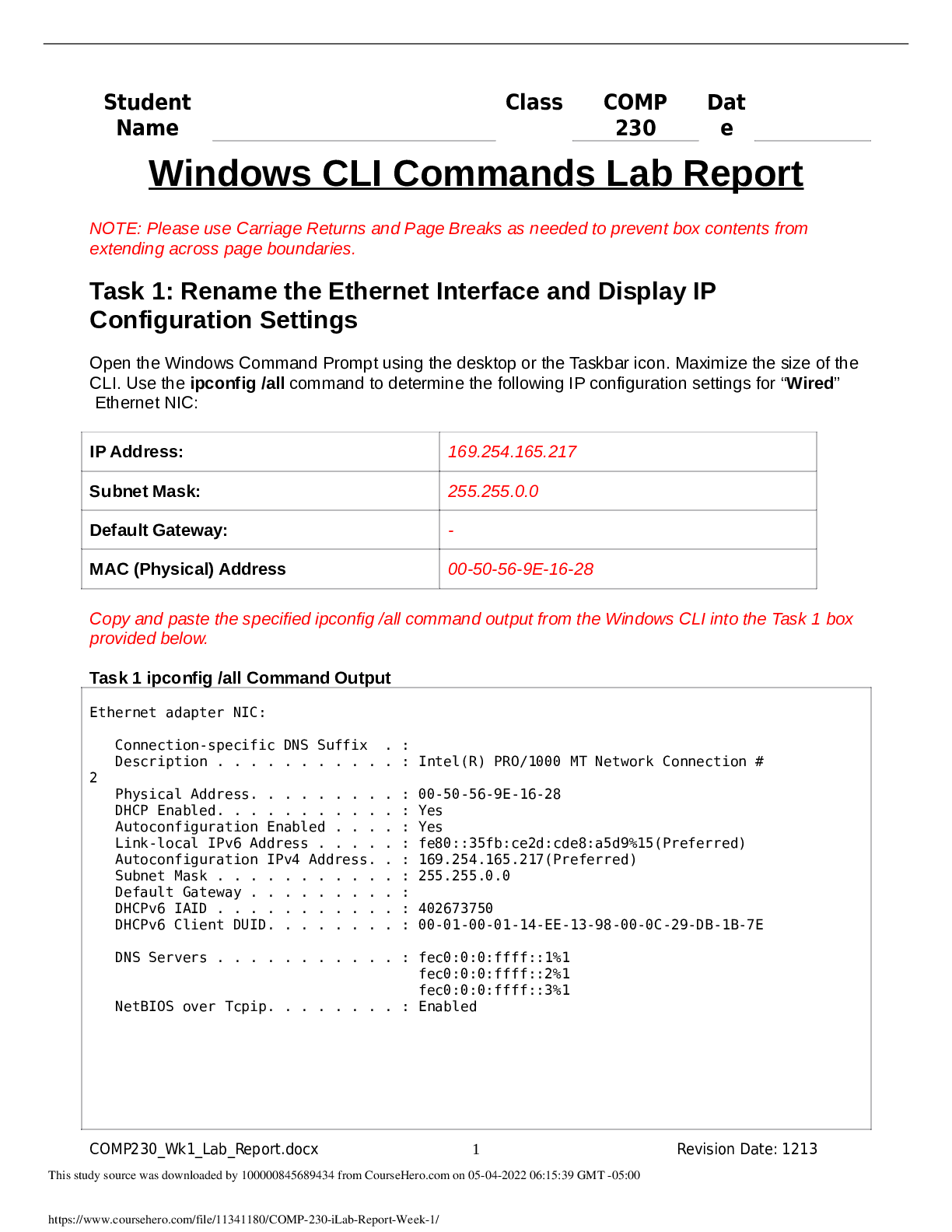

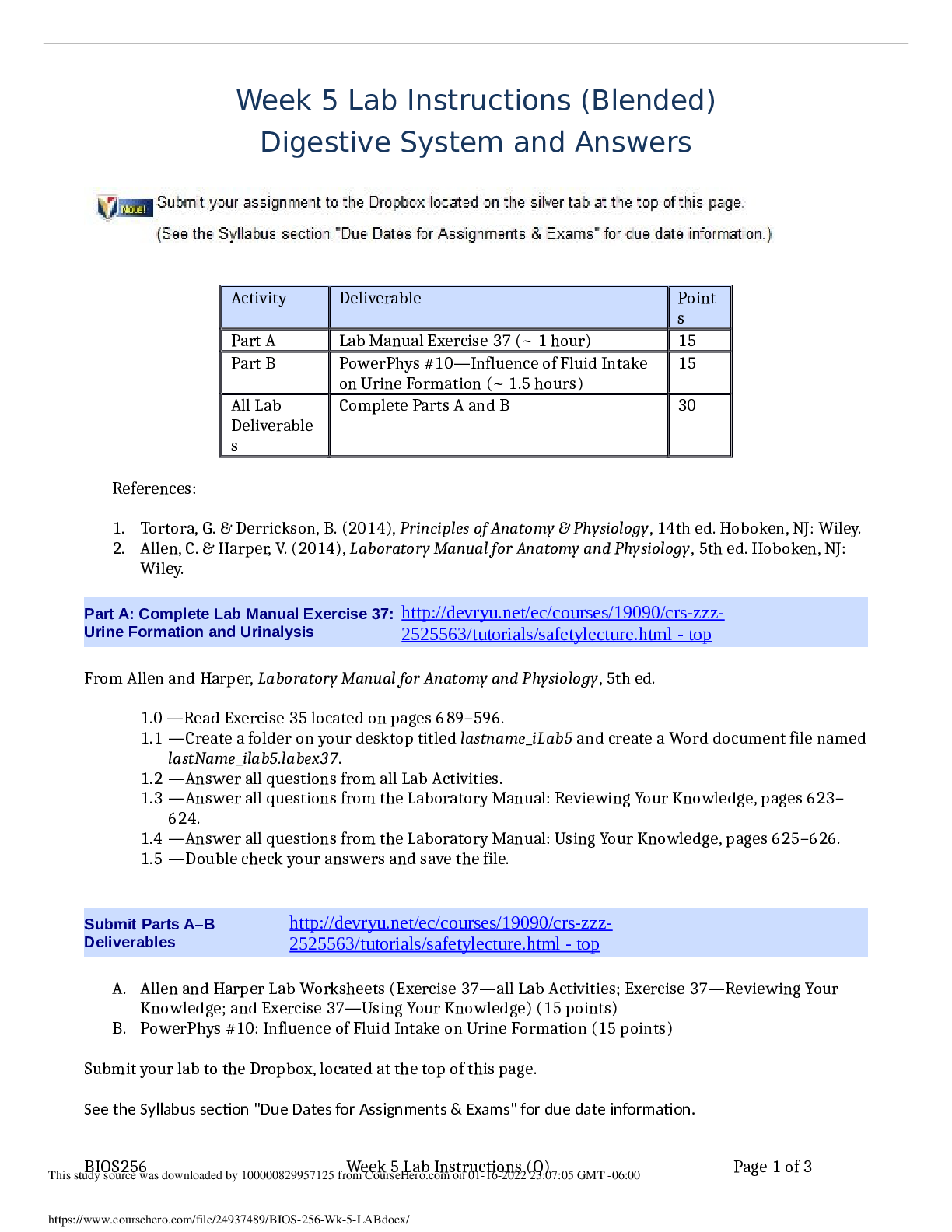

 (1).png)
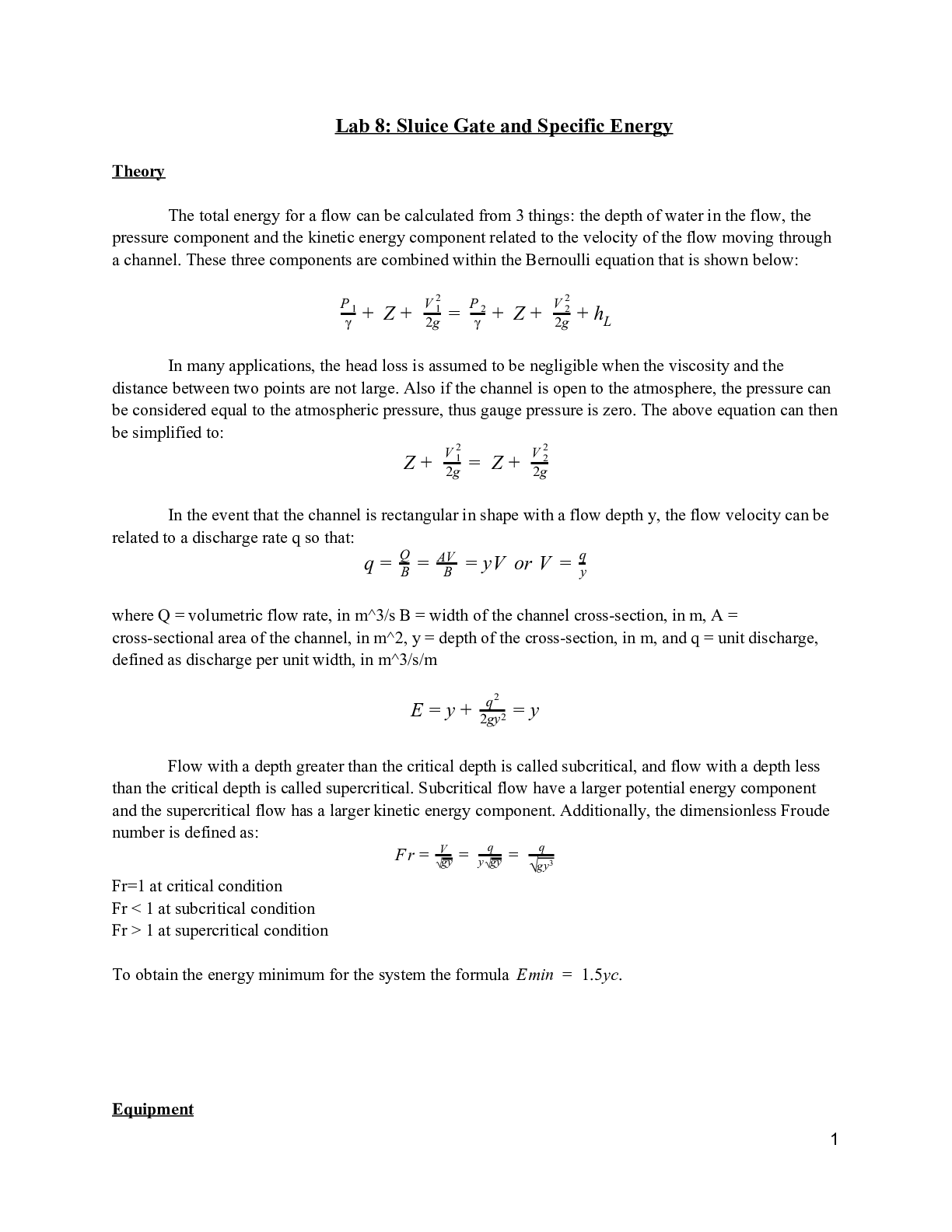
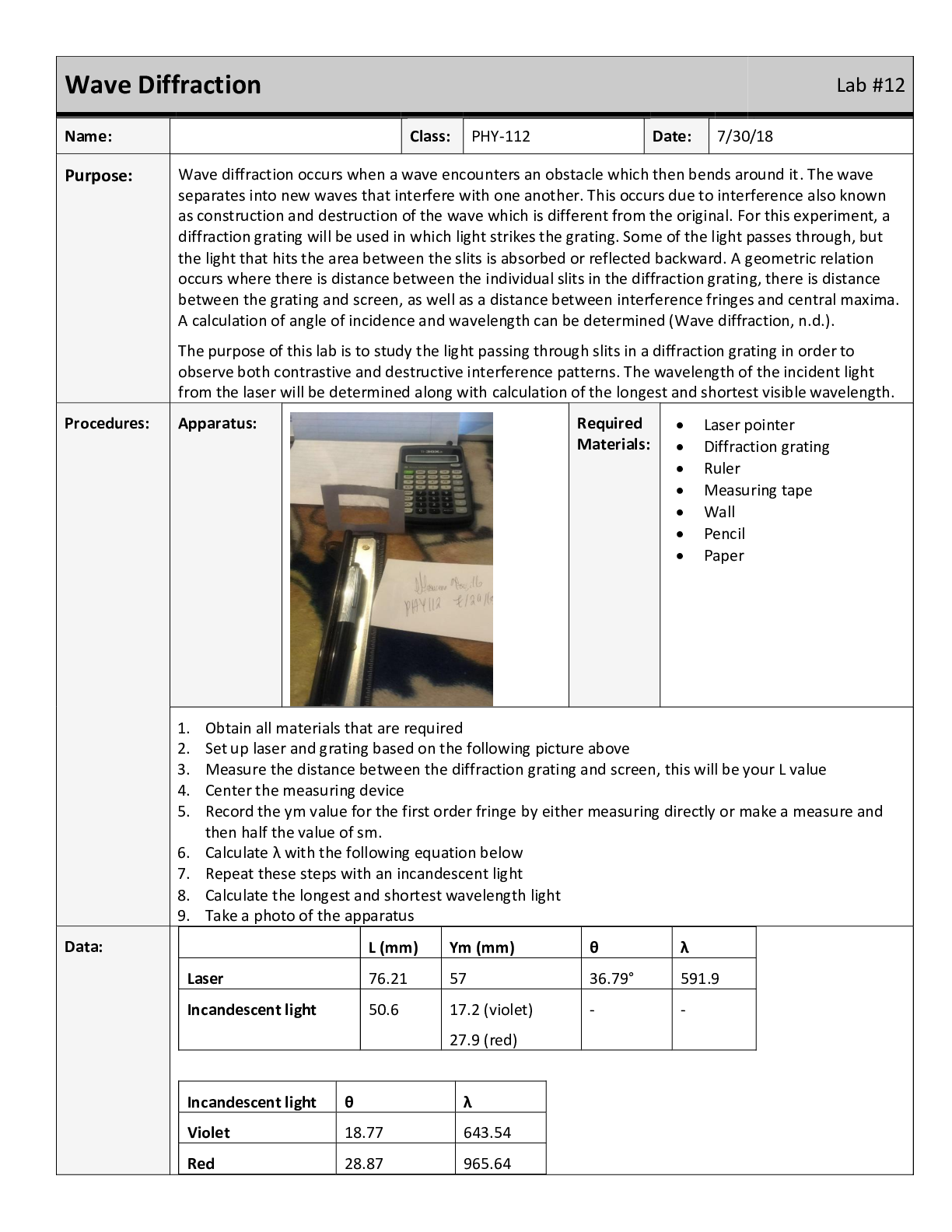

.png)

